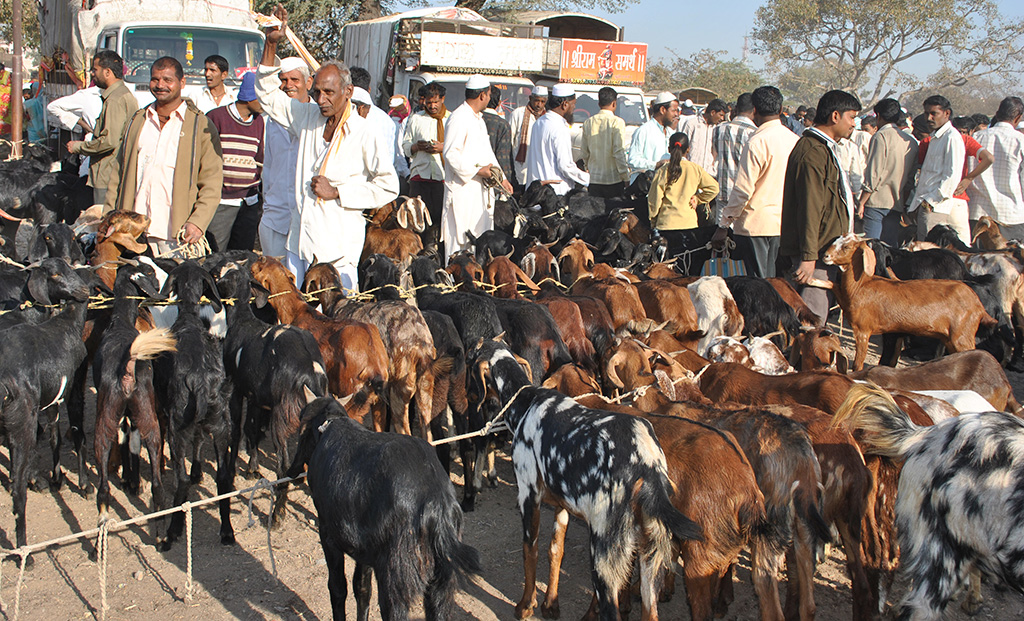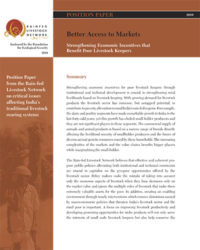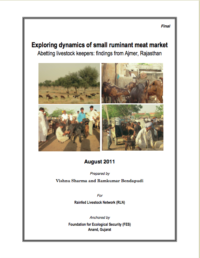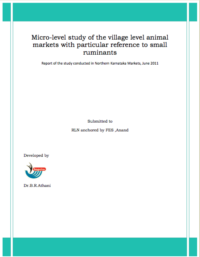Better Access to Livestock Markets

Strengthening Economic Incentives that Benefit Poor Livestock Keepers
India is one of the largest producers of milk, eggs and sheep and goat meat in the world. It also has a large diversity of breeds and a very large livestock population maintained under different production systems from migratory pastoral systems to industrialized production systems. From the organized dairy and poultry sectors to the informal small ruminants, back yard poultry and other animals. The livestock sector provides livelihoods, employment and opportunities for millions of households. At the same time it has the potential of taking care of the special nutritional requirements of a large population of the country wholive in poor and marginal areas. All these factors make for contrasting problems and concerns when it comes to livestock produce and marketing.
The livestock sector in India is presently witnessing a huge transformation in production systems as well as changes within systems. Some are related to changes in size and type of holding, herd composition, species and breeds. These changes are largely in response to emerging markets both global and national, increased urbanization leading to changing lifestyles and consequently people’s food habits.
Lifestyle changes and changes in food habits also means packaged and processed meats are entering Indian homes in contrast to the earlier preference for hot meats. This has created both an opportunity as well as a threat for different classes of Indian producers. Modern systems, demand, share and compete for resources with traditional systems and in many areas threaten to wipe out traditional and back yard systems as well as livelihood opportunities. However, despite the many challenges, these traditional systems of production managed by marginal communities thrive and make significant contributions to the rural economy.
The Rainfed Livestock Network believes that effective and coherent pro-poor public policies alleviating both institutional and technical constraints are crucial to capitalize on the pro-poor opportunities offered by the livestock sector. A focus on improving livestock productivity and developing promising opportunities for niche products will not only serve the interests of small scale livestock keepers but also help conserve the wide pool of indigenous animal genetic resources with its distinctive traits.



